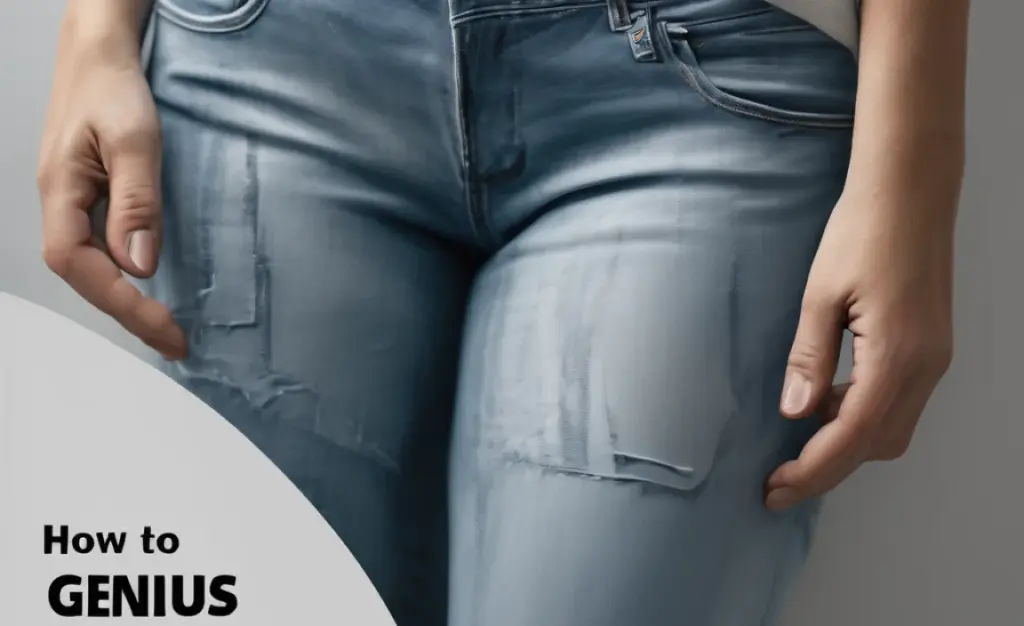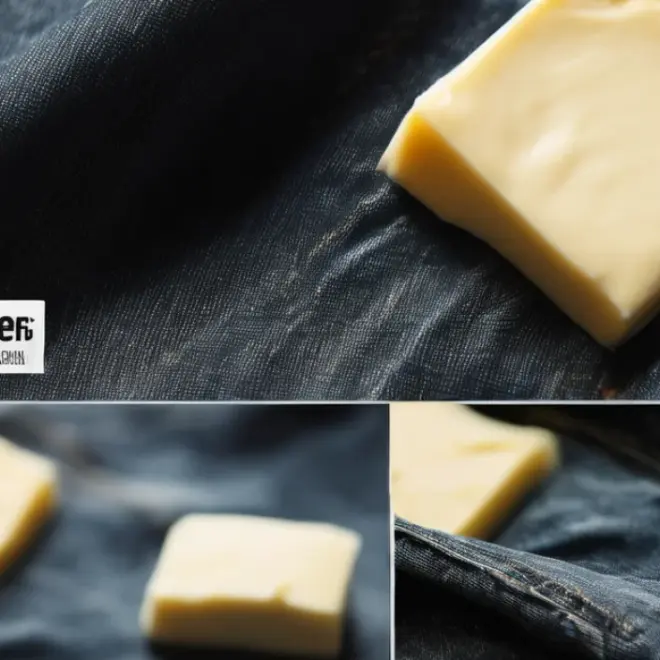Quick Summary: Spilled latex paint on your favorite jeans? Don’t panic! For latex paint on light wash jeans, act fast. Gently scrape off excess wet paint. Then, saturate the stain with warm water and a bit of mild detergent. For tougher, dried-on spots, a rubbing alcohol and baking soda paste or an old toothbrush can work wonders. Always test solutions in an inconspicuous area first.
Oh no, the dreaded paint spill! It happens to the best of us, whether you’re painting a room, working on a DIY project, or just trying to touch up a wall. And if that latex paint lands on your favorite pair of light wash jeans, it can feel like a serious style emergency. But before you resign them to the rag pile, take a deep breath. With a few simple tactics and a bit of patience, you can often rescue your denim and keep those jeans looking as good as new. This guide is designed to walk you through exactly how to tackle those pesky latex paint stains, step-by-step, so you can get back to enjoying your clothes without worry.
Why Latex Paint on Jeans Needs a Gentle Approach

Latex paint, often water-based, can be a lifesaver for home projects because it’s easy to clean up when wet. However, once it dries on fabric, especially delicate fibers like denim, it can set in and become surprisingly stubborn. Light wash jeans, in particular, can show stains more prominently, and harsh scrubbing or strong chemicals can sometimes lead to fading or damage the fabric itself. The key is to use treatments that break down the paint without harming your jeans. We’ll cover everything from immediate action for wet spills to more involved methods for dried-on paint, ensuring you have the best chance of a successful stain removal.
Tools You’ll Need for the Job

Gathering the right supplies upfront will make the whole process smoother. You don’t need anything fancy, just common household items. Having these ready means you can address the stain as soon as possible, which is crucial for paint removal.
- Dull knife, spoon, or plastic scraper
- Soft cloths or paper towels
- Warm water
- Mild liquid laundry detergent (or dish soap)
- Rubbing alcohol (isopropyl alcohol)
- Baking soda
- Old toothbrush or soft-bristled brush
- Cotton balls or swabs
- Commercial latex paint remover (optional, for tough stains)
- Gloves (to protect your hands)
Step-by-Step Guide: How to Remove Latex Paint
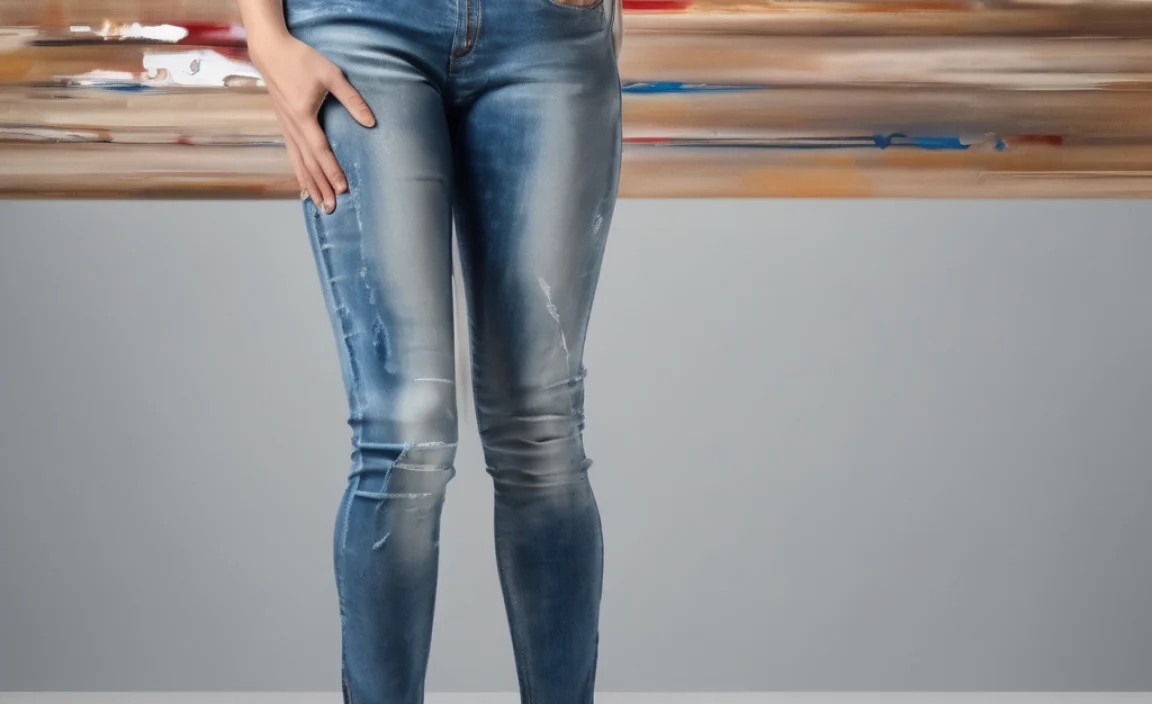
The approach you take will depend on whether the paint is still wet or has already dried. Always remember to work from the outside of the stain inward to prevent spreading it further. And a gentle touch is your best friend here.
Section 1: Tackling Wet Latex Paint Spills
Timing is everything with wet paint. The sooner you can address the spill, the easier it will be to remove. This is where those immediate actions pay off!
- Blot, Don’t Rub: As soon as the paint spills, grab a clean cloth or paper towel and gently blot up as much of the wet paint as possible. Don’t rub, as this will push the paint deeper into the fabric fibers.
- Rinse with Cold Water: Take the affected area of the jeans and hold it under cold running water, allowing the water to flow through the back of the fabric. This helps flush out the paint from the fibers.
- Mild Detergent Wash: Apply a small amount of mild liquid laundry detergent directly to the stained area. Gently work it in with your fingers. Let it sit for 5-10 minutes.
- Rinse Again: Rinse thoroughly with cool to warm water until all the soap is gone.
- Inspect and Repeat: Check to see if the stain is gone. If any paint residue remains, you can repeat steps 3 and 4.
- Launder as Usual: Once the stain appears to be gone, wash your jeans as you normally would, but check them again before putting them in the dryer. Heat from the dryer can set any remaining stain.
Section 2: Removing Dried Latex Paint Stains
Dried latex paint is a bit more challenging, but still often removable. This section dives into the methods you can use when the paint has had time to cure on your denim.
Method A: The Rubbing Alcohol & Baking Soda Paste
This is a common and effective method for breaking down dried latex paint. Rubbing alcohol is a solvent that helps lift the paint, while baking soda acts as a mild abrasive.
- Pre-Treat: If there’s any hardened paint blob, gently try to pick off any loose pieces with your fingernail or a dull knife. Be careful not to snag the denim.
- Prepare the Paste: In a small bowl, mix a tablespoon of baking soda with enough rubbing alcohol to form a thick paste.
- Apply the Paste: Using an old toothbrush or a cotton swab, apply the paste directly onto the dried paint stain. Gently work it into the paint.
- Let it Sit: Allow the paste to sit on the stain for about 10-15 minutes. This gives the alcohol time to soften the paint.
- Gentle Scrubbing: Use the toothbrush to gently scrub the softened paint. Work in small circles. You should start to see the paint lifting.
- Rinse: Rinse the area thoroughly with warm water.
- Inspect and Repeat: Check the stain. If it’s still visible, you can repeat the paste application and scrubbing process. Sometimes a second or third application is needed for stubborn spots.
- Wash: Once the paint is removed, wash your jeans as usual. Air dry to ensure no stain remains.
Method B: Using Mild Heat (with caution!)
Sometimes a bit of warmth can help soften dried latex paint enough to be removed. This method requires extra care to avoid damaging your jeans.
- Soften with Warm Water: Dampen the stained area with warm water.
- Apply Mild Detergent: Rub a small amount of mild liquid detergent into the damp stain.
- Gentle Scraping: Use a dull knife or the edge of a credit card to gently try and scrape away the softened paint. Work slowly and carefully to avoid damaging the fabric.
- Repeat if Necessary: You may need to re-dampen and apply more detergent to fully remove the paint.
- Wash: Wash your jeans as customary.
Method C: Commercial Latex Paint Removers
For very stubborn, dried-on latex paint stains that resist home remedies, you might consider a commercial paint remover. These products are specifically formulated to break down paint but can be harsher.
- Choose Wisely: Look for a remover that is specifically designed for latex paint on fabric. Always read the product label and instructions carefully.
- Test in an Inconspicuous Area: Before applying to the stain, test the remover on a hidden part of your jeans (like an inside seam or hem) to ensure it doesn’t cause discoloration or damage.
- Apply Sparingly: Follow the product’s instructions precisely. Typically, you’ll apply a small amount directly to the stain.
- Allow Dwell Time: Let the remover work for the recommended time.
- Gentle Agitation: You may need to gently agitate the area with a soft cloth or brush as per the product instructions.
- Rinse Thoroughly: Rinse the area extremely well with cool water to remove all traces of the remover.
- Wash: Wash your jeans immediately and air dry.
Important Considerations for Light Wash Jeans
Light wash denim is beautiful, but it’s also more prone to showing discoloration or fading if treated too aggressively. Here are a few extra tips specifically for your lighter colored jeans:
- Always Test First: This cannot be stressed enough. Before applying any cleaning solution, whether it’s rubbing alcohol or a commercial remover, test it on an inside seam or a small, hidden area. This will show you how the fabric reacts to the cleaner and if it causes any unwanted fading.
- Avoid Bleach: While you might think bleach would be the answer for stains on light fabric, it can actually react unpredictably with paint and can cause yellowing or damage to denim fibers. Stick to gentler methods.
- Work with Patience: Rushing the process is more likely to lead to damage or incomplete stain removal. Take your time with each step.
- Consider the Dye: Many denim dyes, especially on lighter washes, are not as colorfast. Be extra gentle when scrubbing and rinsing to avoid lifting the jean’s dye along with the paint.
Understanding Latex Paint and Fabric: A Scientific Glance
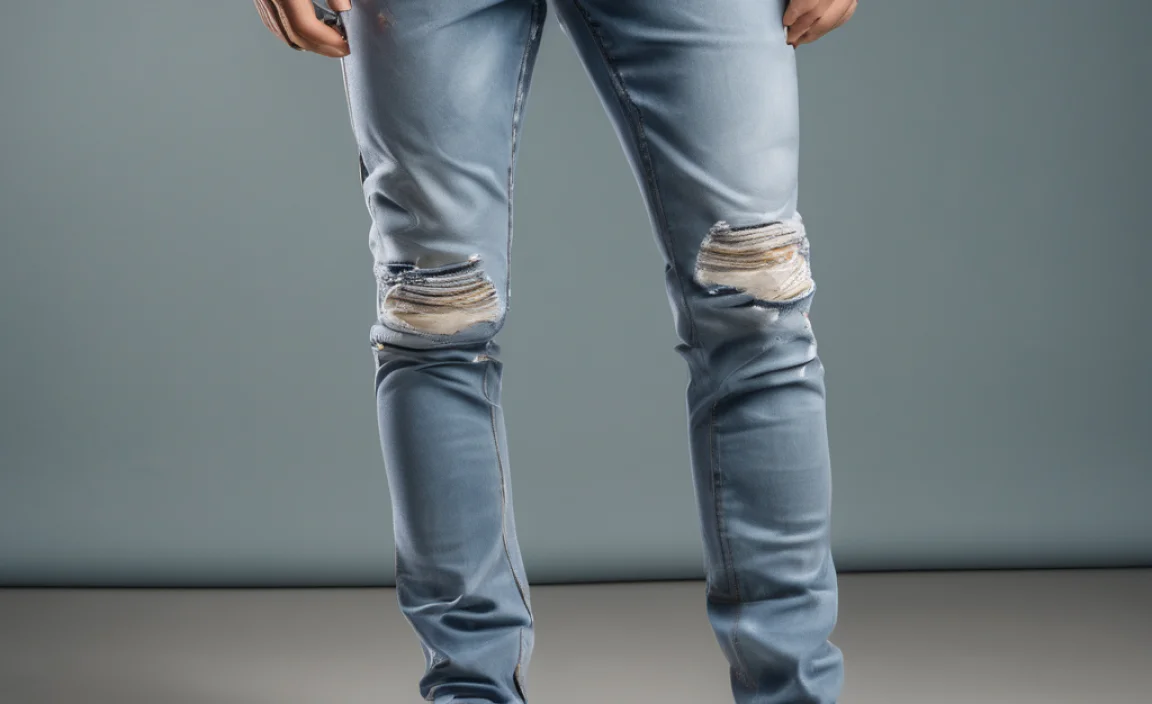
Latex paint is essentially a suspension of pigment particles in a binder, which is typically a polymer emulsion (like acrylic, vinyl, or a blend). When the water evaporates, this binder forms a solid, continuous film that adheres to surfaces. For fabrics, this means the paint creates a flexible plastic-like coating. The goal of removal is to break down this binder and release the pigment from the fabric fibers. Solvents like isopropyl alcohol work by dissolving or softening the polymer, making it easier to lift away. Water-based cleaners help to emulsify and wash away the loosened paint particles.
The Environmental Protection Agency (EPA) notes that understanding the composition of paints can aid in their proper disposal and cleanup. While this is often in the context of construction, the principle of knowing what you’re dealing with applies to stain removal as well. Latex (water-based) paints offer a distinct advantage in removal precisely because they are water-reducible before drying, and their binders can often be softened by common household solvents.
Pros and Cons of Different Removal Methods
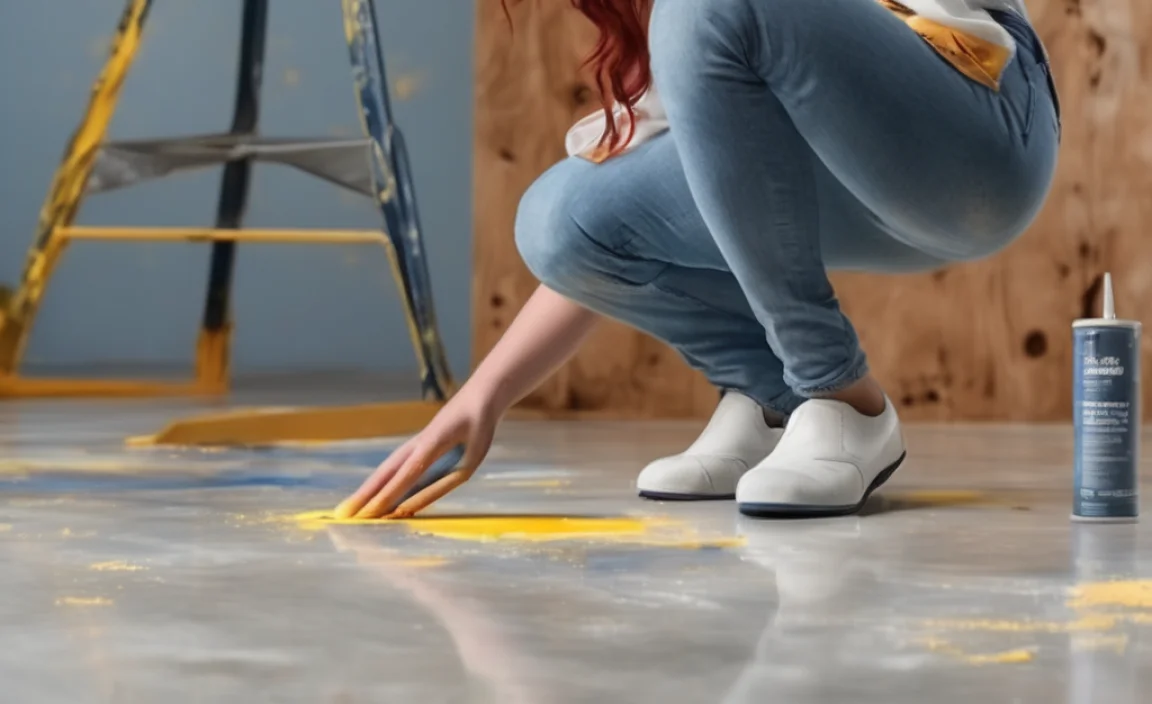
Every method has its advantages and disadvantages. Knowing these can help you choose the best approach for your situation.
| Method | Pros | Cons |
|---|---|---|
| Warm Water & Detergent (Wet Paint) | Gentle, readily available, effective for fresh spills. | Only works on wet paint; may not be sufficient for dried paint. |
| Rubbing Alcohol & Baking Soda Paste | Effective for dried paint, common household ingredients, good for localized stains, generally safe for denim. | Can take multiple applications; requires gentle scrubbing; alcohol has a strong odor. |
| Mild Heat | Can soften some dried paints. | Requires extreme caution to avoid damaging fabric or setting the stain further; may not be effective for all paints. |
| Commercial Paint Remover | Potentially powerful for very stubborn, old stains. | Can be harsh, risk of fabric damage or discoloration, requires careful testing and strict adherence to instructions, chemical fumes. |
Frequently Asked Questions (FAQ)
Q1: Can I really get dried latex paint out of jeans?
Yes, often you can! While it’s more difficult than removing wet paint, dried latex paint can be treated with methods like rubbing alcohol and baking soda paste, or sometimes commercial removers. Patience and persistence are key.
Q2: Is it safe to use rubbing alcohol on my light wash jeans?
Rubbing alcohol (isopropyl alcohol) is generally safe for most denim when used correctly. However, as with any cleaning solution, it’s crucial to test it on an inconspicuous area first to ensure it doesn’t cause any discoloration or damage to your specific jeans.
Q3: How long should I let the paint remover sit on the stain?
Always follow the specific product’s instructions. The dwell time can vary significantly between different commercial paint removers. Leaving it on too long can damage the fabric, while not leaving it long enough might mean the paint doesn’t break down.
Q4: What if I don’t have rubbing alcohol? What’s another good option?
For dried paint, if you don’t have rubbing alcohol, you can try a paste made with a mild laundry detergent and a bit of water, applied to a damp stain. Another less common but sometimes effective method is a paste of baking soda and white vinegar, though this can sometimes cause slight lightening due to the acidity of vinegar. Always test these options first.
Q5: My jeans went through the dryer and the paint stain is still there. What now?
If the paint set in the dryer, it will be much harder to remove. You’ll need to try more intensive methods, like rubbing alcohol or a commercial paint remover, as described for dried paint. Be prepared that some set stains might be permanent, but it’s worth trying the stronger methods.
Q6: Can I use a household iron to help remove latex paint?
Using heat from an iron directly on the paint stain is generally not recommended. While heat can sometimes soften some materials, it can also easily set latex paint permanently into fabric fibers or cause damage and discoloration. It’s better to rely on solvents and gentle scrubbing.
Preventing Future Paint Mishaps
The best way to deal with paint stains is to avoid them! When you’re getting ready for a painting project or any activity where spills are possible, take these simple precautions:
- Dress for Mess: Wear old clothes that you don’t mind getting paint on.
- Cover Up: If you need to wear your favorite jeans, consider wearing an apron or covering your legs with a tarp or old sheet.
- Secure Your Paint: Always place paint cans and supplies on a stable, covered surface. Use a paint tray with a lid or a covered bucket when possible.
- Work Away From Valuables: If you’re painting indoors, move furniture and items away from the work area.
- Keep Rags Handy: Have plenty of old rags or paper towels readily available to wipe up spills immediately.
For those who work with paint regularly, considering durable workwear or investing in high-quality plastic sheeting for your workspace can significantly reduce the risk of accidental spills on clothing.
Conclusion: Your Jeans Are Likely Salvageable!
Seeing latex paint on your light wash jeans can be a disheartening moment, but it doesn’t have to be the end of the line for your favorite denim. By understanding the nature of latex paint and employing the right techniques—acting quickly for wet spills and cautiously for dried stains—you have a very good chance of removing the mark. Remember to always test your chosen method in an inconspicuous area first, and be patient through the process. With a common household arsenal like mild detergent, rubbing alcohol, and a bit of gentle scrubbing, your jeans can often be restored to their former glory. So, don’t despair; give these methods a try and save your denim!


